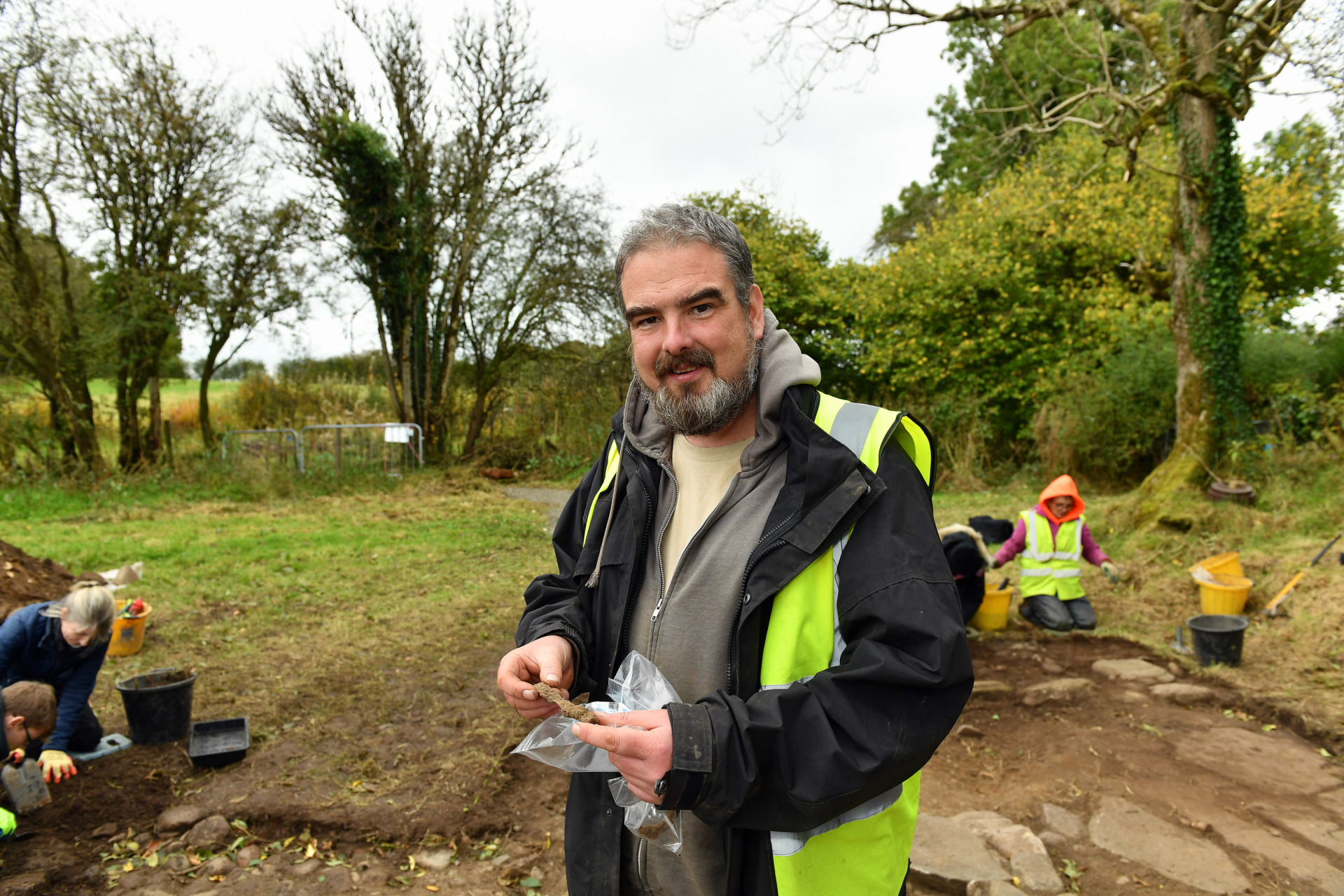Last week, I found myself crouched in a field at the Ulster American Folk Park, trowel in hand, helping to uncover the remains of a 200-year-old building. It was an experience I had never imagined I’d be part of, but one that has revisited my thoughts occasionally ever since.
With each scrape of the soil, I felt more connected to the past, to the lives of those who once walked where I now knelt.
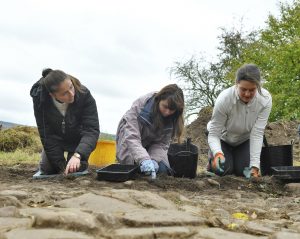
I was one of several volunteers joining a team of archaeologists on the dig, which was supported by The National Lottery Heritage Fund, thanks to National Lottery players.”
Our guide for the day was Brian Sloan, an archaeologist whose enthusiasm for the work was contagious.
From the moment we met him, armed with an 1834 map and a trowel he used to point out areas of interest, I knew we were in for a fascinating journey into history.
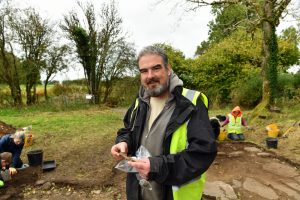
“This here in my hand is a first edition map of 1834,” Brian explained, pointing to a black rectangle on the map.
“You can see it has two buildings mapped out in the very field we stand in now, and as luck would have it, here behind me lies the remains of this little building here… The curious thing is that this building had been completely knocked down by 1900 – completely eradicated.”
The structure had been wiped from all later maps, but its remains lay just beneath the surface, waiting to be rediscovered.
When we followed Brian toward the dig site, we saw a cobbled path emerging from the thick muck. It had likely not seen daylight in over two centuries.
Alongside the path were the foundations of the building we had come to uncover—a structure that, as Brian speculated, could date back to the late 18th century, possibly as far as the 1790s. The thought of standing on the very ground that might have witnessed key moments in Irish history—perhaps even the 1798 Rebellion—was surreal.
Soon, we were handed our tools and set to work. Bucket, shovel, trowel, and kneeler in hand, I began scraping back layers of soil. Each motion felt like a small act of time travel, revealing cobbles and stones that hadn’t been touched in 200 years.
As we worked, Brian’s voice carried across the site, filled with excitement as he shared details about the building’s possible past. “What we’re hoping to find is evidence of its purpose—pottery, clay pipes, anything that can give us a clue.”
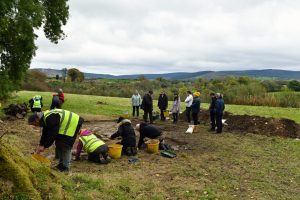
The lack of personal items suggested it might have been an agricultural outhouse, but we wouldn’t know for sure until more was uncovered.
While the work was physical, the conversations that unfolded between volunteers made the day all the more memorable. There was a real mix of people: A tour guide from the Folk Park, an archaeology graduate from Belfast, a school student thinking about pursuing archaeology, and a mother whose son had a keen interest in archaeology.
As we dug, we swapped stories about what had drawn us to the dig, marvelled at the number of worms in the soil, and moaned at the aches in our knees from hunkering down for hours.
I wasn’t the only one feeling the pull of the past. One mother and son duo made an exciting find, uncovering more fragments of a cast iron skillet—the kind that would have been central to life in a rural home during the 19th century. The skillet, along with a Victorian penny found earlier by a schoolboy, were some of the few artefacts we had recovered, but they were enough to piece together a little more of the building’s history.
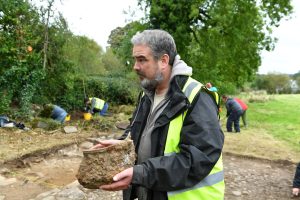
As I sat back on my heels, wiping the dirt from my hands, I found myself imagining the lives of the people who had once lived and worked here. Brian had told us that the building probably stood through the Act of Union, through the Famine, through times of hardship and change. I couldn’t help but wonder who had walked this cobbled path, what meals had been cooked in that cast iron cauldron, and what stories had been lost to time.
At the end of the day, as we packed up our tools and surveyed the site, Brian’s excitement hadn’t waned.
“It would be wonderful to open up the whole field and see what else is out there,” he mused, gazing toward a nearby tree stump where he suspected more homestead foundations might lie. His hope, like mine, was that this dig was just the beginning.
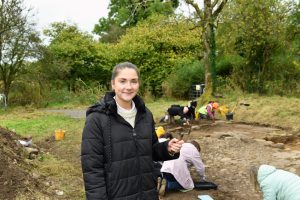
Leaving the site, I felt a sense of accomplishment. We hadn’t unearthed treasure, but what we had found—those cobbled stones, the skillet fragments, the foundations of a forgotten building—were pieces of history that had been buried for centuries. And we had brought them back to light.
The work was fulfilling; something about connecting with the past in such a hands-on way, that I even considered calling in sick the next day, just so I could return to the dig.
For now, the ruins remain partially revealed, waiting for the next team of volunteers to peel back more layers. But I’ll be back, eager to chase that feeling of discovery again, to step once more into the shoes of an archaeologist and spend a day lost in time.






